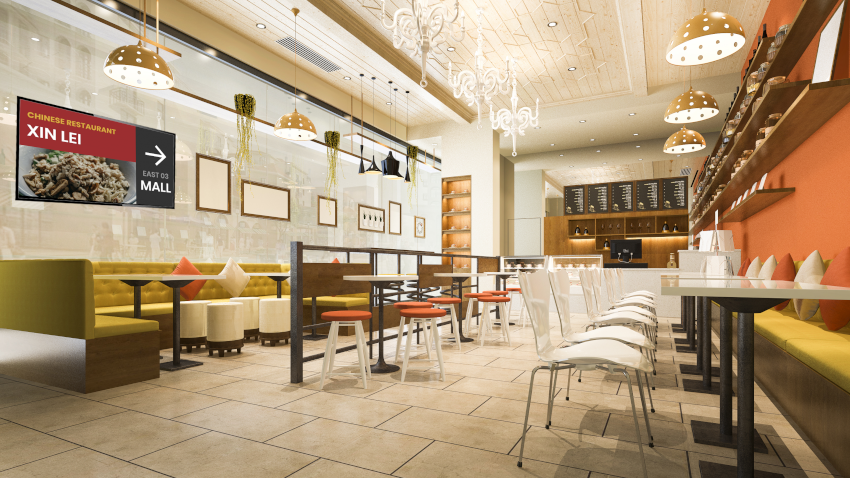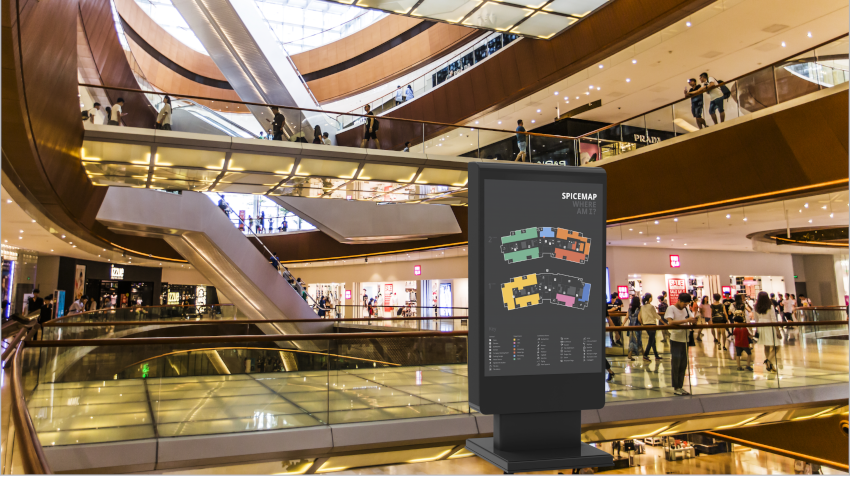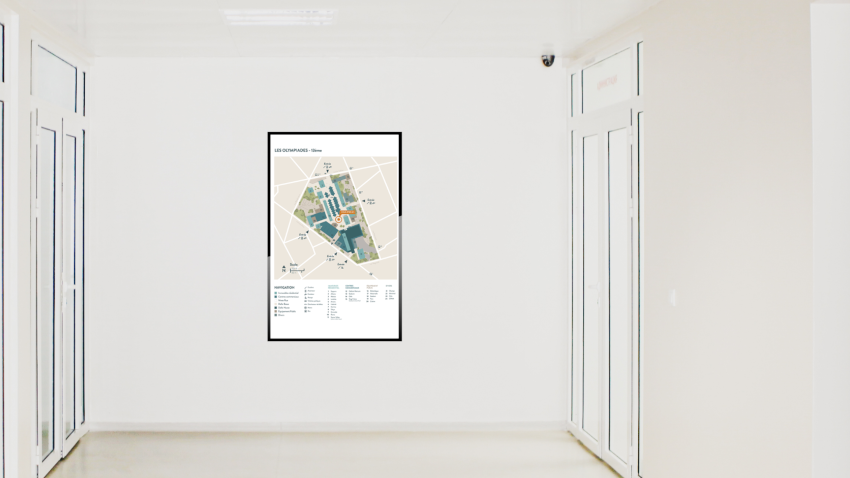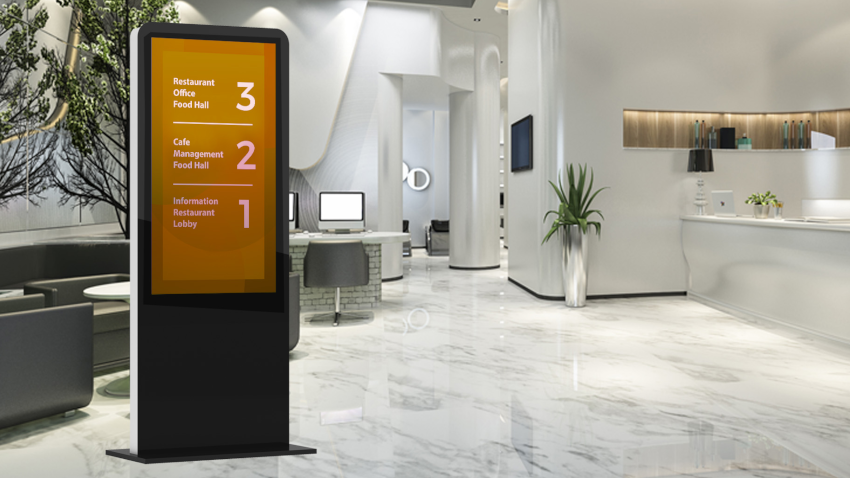Contactless Wayfinding: What Is It and How Does It Work?
The onset of the coronavirus pandemic disrupted businesses and lifestyles. The government’s stay-at-home and minimized contact initiatives pushed businesses to adopt touchless options. As businesses adapted to the new procedures, contactless wayfinding became a critical requirement in shared spaces. Furthermore, 87% of customers say they prefer touchless services with self-check-out options.
Contactless wayfinding has become the safest solution in pushing traffic back into businesses, and with 60% of enterprises without digital signage in their stores planning to invest in the technology, now is the time to invest in this solution. Here is a basic comprehensive guide on what contactless wayfinding is and how it can benefit your business.

What Is Contactless Wayfinding?
It’s an information system that guides people and enhances their understanding and experience of a physical environment. Contactless wayfinding is essential, especially in a complex build environment like transport facilities, healthcare centers, educational campuses, and urban centers. Touchless wayfinding helps enforce safety protocol, ensure social distancing and inform customers where to wait or in which direction to walk.
Architectural environments are often complicated, and people need visual directions like directions, maps, or symbols to guide them to their destination. Thus, contactless wayfinding systems enhance safety, security, and well-being and improve user experience.
How Does a Wayfinding System Work?
Wayfinding solutions help businesses direct their customers in their day-to-day directions. The system helps people understand the floor plan better. It does this through a cognitive map, physical kiosk, or geographic work. A wayfinding system works through these four elements.
1. Navigation
It refers to the physical direction of your destination. For example, a road or a road sign can serve as the navigation in a wayfinding system. It includes using directional or static signs to guide people along the path to their intended destination.
2. Orientation
For a customer to navigate, they need to know where they are in the building and which direction to head. Knowing the specifics like the distance from one place to another or the door number can help your customers head in the right direction with minimal effort. Also, orientation can be a tool like a map, making it easy for customers to locate landmarks and identify their destination. Maps are powerful and come in handy to express and oversee the building environment.
3. Landmark
Refers to a particular location which makes a wayfinding system easier to use. It can be an object, art installations, buildings, or museums. Therefore, to make the environment legible even for first-time visitors, it’s necessary to mark specific locations and spaces. Landmarks enforce recognition and play a crucial part in overseeing a large area. They make a site more visible and make a mark in the human memory.
Contactless wayfinding combines technology with wayfinding to create a digital signage system for an architectural structure. It includes interactive maps, video walls, or digital displays in public spaces to help people navigate a building.

Why You Should Use Contactless Wayfinding for Your Business
There are different ways your business can benefit by adopting contactless wayfinding. These advantages include the following.
1. End the Confusion and Make Buying Easier
If you have a first-time visitor in your healthcare facility, large corporation, or business located in a multi-building, they are likely to be confused. Digital wayfinding ends this confusion and ensures they move in the right direction. Additionally, wayfinding ensures they know where to go to get a product or service, preventing them from wandering around the building.
2. Improve Customer Experience
In all industries, prompt customer service is essential to improve the visitor experience and show your customers you care about them. Digital wayfinding systems direct customers and also help with subtle marketing messages. Thus, it helps in promotion, increasing sales. Companies that offer excellent customer experience increase revenue by 4-8% compared to other companies. Mvix offers interactive contactless wayfinding solutions to boost the visitor experience.
3. Matches the Current Needs and Is the New Normal
The business world is dynamic, and currently, touchless wayfinding meets the current needs. Now, people expect information that is interactive and with minimal contact. However, as more people spend time on their mobile devices, shopping online, and booking appointments online, they need online wayfinding solutions. Therefore, adopting digital wayfinding enhances the customer experience as places using paper notices are currently out of touch.
4. Promotes Self-Service
Interactive wayfinding promotes self-service as it guides the customers without having personnel give directions all day. So, your employees can focus on offering their services to visitors, making them more productive. Thus, touchless wayfinding helps increase both customer and employee satisfaction. Besides, 40% of customers prefer self-service over human contact.
5. It’s More Presentable
Contactless wayfinding is among the digital signage solutions which are presentable. You can add a good design and make the wayfinding attractive and more presentable. Besides, you can add some motion on the video walls to draw attention to the kiosks or touchscreens. Additionally, you can add some color schemes and imagery to reinforce your brand.
6. Easy to Use
Visitor experience matters and the friendly user interface of the touchless wayfinding system increases customer experience. The interactive wayfinding offers a guide that each visitor can search at their pace. Therefore, your visitors will feel more relaxed and in control, creating a positive user experience.

What’s more, digital wayfinding is more efficient as it reduces congestion in lobbies and corridors since people go to kiosks to get their destination information. So, if you have an upcoming webinar, you can easily guide visitors to the meeting room without delegating staff to guide them. Furthermore, visitors can use QR codes to scan and get an indoor map of the environment.
7. Flexibility
Contactless wayfinding offers you different ways to present information. You can use animated 3D maps or 2D floor plans. Actually, information can be presented either by floors, departments, alphabetically, or by order or rooms. You can also present each element differently using a single screen. Thus, one kiosk can service different people with different preferences.
8. Integrated and Responsive
Since digital wayfinding is well integrated, you can present information in a way that suits your visitors best. The content management feature allows you to update information on the screen to suit your audience quickly. Moreover, you can use a web-based UI that allows you quickly make changes on display to add real-time announcements. Contactless wayfinding is also responsive, making it ideal for mobile devices. Alternatively, you can expand to a mobile app to offer turn-by-turn directions for visitors from their current spot.
9. Real-Time Updates
All industries can benefit from a touchless wayfinding system. Has the workplace meeting been moved to a different room? Or has the flight been canceled? You can always use the wayfinding system to give real-time updates, helping people deal with unexpected last-minute changes.
Moreover, digital signage offers a fast way to share breaking news to many people as long as there is Wi-Fi connectivity. It can also be helpful to integrate wayfinding solutions with emergency systems to keep people safe during evacuations.
Attract Customers with Digital Wayfinding
No one would prefer to wander around a building wondering which office to get a product or service. Every visitor wants to reach their destination as quickly as possible, get served, and carry on their errands.

Compared to digital static, two-dimensional printed signs, contactless wayfinding offers a sensual customer experience. Besides giving basic information about the building and floor plan, digital wayfinding also shows visitors the best path to get to their destination. As a result, time is always a great resource in business, and different industries realize the time-saving potential of digital wayfinding.


